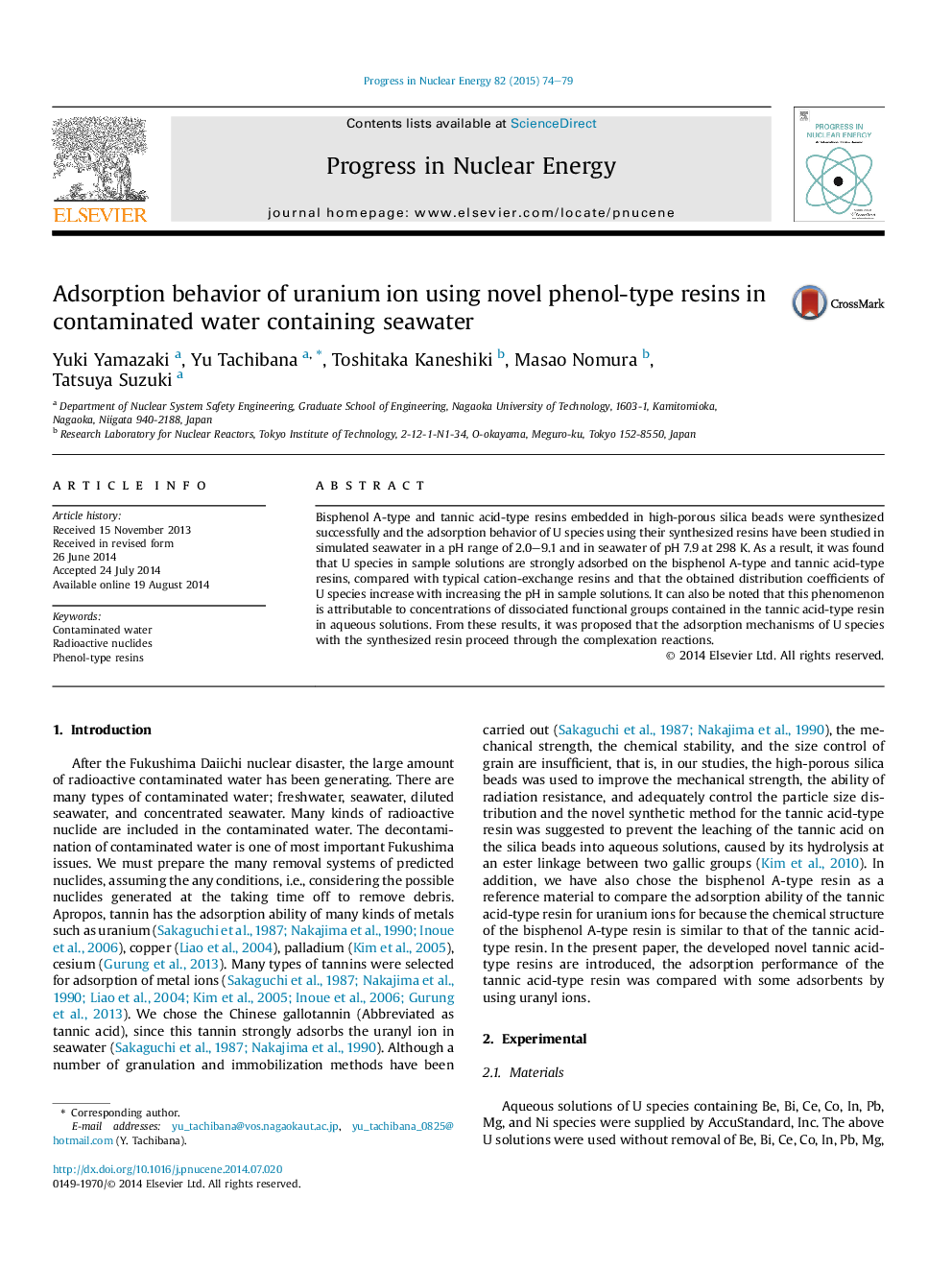| Article ID | Journal | Published Year | Pages | File Type |
|---|---|---|---|---|
| 1740345 | Progress in Nuclear Energy | 2015 | 6 Pages |
•We have developed the novel tannic acid-type and bisphenol A-type resins.•Adsorption behavior of U ions using the synthesized resins has been studied.•Tannic acid-type resin showed the highest adsorption ability in some resins.•The adsorption mechanisms proceed through the complexation reactions.
Bisphenol A-type and tannic acid-type resins embedded in high-porous silica beads were synthesized successfully and the adsorption behavior of U species using their synthesized resins have been studied in simulated seawater in a pH range of 2.0–9.1 and in seawater of pH 7.9 at 298 K. As a result, it was found that U species in sample solutions are strongly adsorbed on the bisphenol A-type and tannic acid-type resins, compared with typical cation-exchange resins and that the obtained distribution coefficients of U species increase with increasing the pH in sample solutions. It can also be noted that this phenomenon is attributable to concentrations of dissociated functional groups contained in the tannic acid-type resin in aqueous solutions. From these results, it was proposed that the adsorption mechanisms of U species with the synthesized resin proceed through the complexation reactions.
Graphical abstractFigure optionsDownload full-size imageDownload as PowerPoint slide
